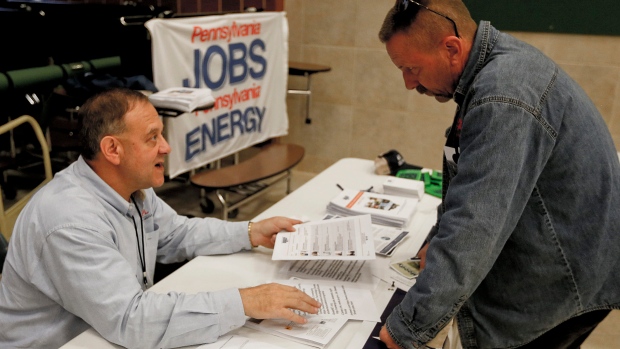Jan 4, 2019
U.S. payrolls rise by 312,000, wages top estimates in jobs blowout
, Bloomberg News

U.S. employers added the most workers in 10 months as wage gains accelerated and labour-force participation jumped, reflecting a robust job market that nevertheless faces mounting risks in 2019.
Nonfarm payrolls increased by 312,000 in December, easily topping all forecasts, after an upwardly revised 176,000 gain the prior month, a Labor Department report showed Friday. Average hourly earnings rose 3.2 per cent from a year earlier, more than projected and matching the fastest pace since 2009. Meanwhile, the jobless rate rose from a five-decade low to 3.9 per cent, reflecting more people actively seeking work.
The hiring and wage gains will support consumer spending and offer some respite after a spate of weak economic data and cuts in corporate revenue forecasts fueled stock-market jitters. Still, it may be hard to replicate such labor-market strength in 2019 amid the U.S.-China tariff war, softening manufacturing, a housing slowdown and a projected cooling in global growth.
Federal Reserve Chairman Jerome Powell is scheduled to speak later Friday morning in Atlanta. While the report is in line with the Fed's view of a healthy job market and officials last month penciled in two interest-rate hikes for 2019, the central bank may need more evidence of strength before moving forward with the next increase following four in 2018.
Before Friday's report, investors had begun betting that policy makers will instead end up cutting borrowing costs.
The figures brought the 2018 payrolls gain to 2.64 million. Economists expect the pace of gains will ease this year, consistent with their forecasts that gross domestic product growth will moderate amid the trade war and a fading boost from the Trump administration’s tax cuts.
Broad Strength
The labor strength spanned most industries, including the biggest gain in construction since February, and the most manufacturing jobs added in a year. Private service providers boosted payrolls by 227,000, the most in more than a year, amid gains in education and health services, leisure and hospitality, and retail.
While the unemployment rate increased to a five-month high, it may not be much of a concern because the participation rate rose to 63.1 per cent -- the highest since September 2017 -- from 62.9 per cent. The jobless rate remains well below the level that central bankers consider sustainable in the long run.
Average hourly earnings for all private workers rose 0.4 per cent from the prior month following a 0.2 per cent gain, the report showed. The annual increase followed a 3.1 per cent advance.
Another measure, average hourly earnings for production and non- supervisory workers, increased 3.3 per cent from a year earlier. While worker pay has risen very gradually during most of the economic expansion, companies have been competing more vigorously in recent months to attract and retain workers.
Get More
- Private payrolls rose by 301,000, well above the median estimate of 185,000. Government payrolls increased by 11,000.
- The employment-population ratio, another broad gauge of labour-market health, was unchanged at 60.6 per cent.
- The average workweek increased to 34.5 hours from 34.4 hours in the prior month; a shorter workweek has the effect of boosting average hourly pay.
- The U-6, or underemployment rate, was unchanged at 7.6 per cent. This measure includes part-time workers who want a full-time job and people who are less active in seeking work.
- In annual revisions to data based on the household survey, the unemployment rate for October was increased to 3.8 per cent from 3.7 per cent.
- Labor Department economic releases are proceeding as scheduled, as the agency isn't part of the partial federal- government shutdown.
